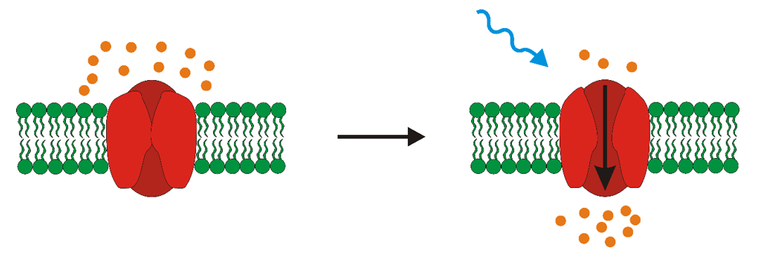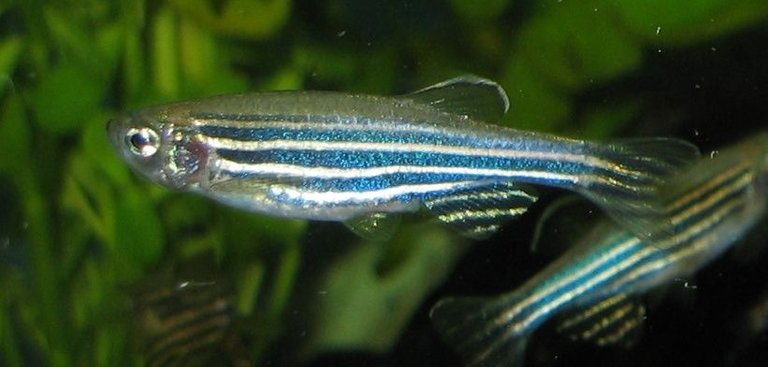Hi fellow Steemians! As we celebrate love and romance today I would like to demonstrate how to make someone’s heart beat faster (using optogenetics).
What am I talking about?!
Read on and find out!

The basics
Just for those of you that have no idea. It is a method combining optics and genetics in order to precisely control the activity of cells in space and time. The main principle of action lies in the use of light-sensitive proteins termed opsins. Opsins have two abilities – they are ion channels (meaning that ions can pass in and out of the cell through them) and they respond to light. When they are illuminated with light (that has specific wavelength) they open and ions flow through them.

As you may know change in membrane potential is the main mechanism of propagation of neuronal signal. And optogenetics do exactly that! Thus, they were primarily used in the field of neuroscience. However, they application widened in recent years to areas such as cancer treatment, sight restoration and control of heart cells. If you want to know more about optogenetics look at the end of the article – there are links to all my previous works on this subject.
Controlling heartbeat with light
As I already mentioned, application of optogenetics is not limited to neurons. The activity of heart is maintained by electric activity of specific cell structures. However, study of these processes in vivo (in living organisms) is limited by technologies at our disposal. Optogenetics can generate electrical current by changing the concentrations of ions on outer and inner side of cell membrane. Thus, at least in principle, could such technology be capable to modulate heart and be applied in cardiologic research.
Brugemman et al. were able to successfully express ChR2 (an opsin) in the plasma membrane of mice cardiomyocytes in 2010. Stimulation with blue light in vitro resulted in depolarization of cells (so it worked!) Light stimulation in vivo led to disruption of standard heart activity and prolonged stimulation even led to arrhythmia. Well, there was this downside – in order to deliver light and observe the heart activity the mice had to have their chest cavities open.
Arrenberg and his colleagues in the same year expressed light-sensitive proteins in the cardiomyocytes of small fish called Danio rerio. This fish is actually transparent and thus there are no difficulties with monitoring the heart beat or get light inside the body of fish. They were able to artificially create tachycardia, bradycardia, or even completely stop the heart of the fish.

Source
Possible non-invasive methodology with the ability to control heart activity with spatio-temporal precision could revolutionize cardiologic research. We could better understand functions of individual heart cells in healthy and pathological tissue. This could also be a possible alternative to electric devices used nowadays to modify heart activity in patients with cardiovascular diseases.
DIY

So, you might now say: Hey, but you did not tell us how to make the heart of my crush run faster! Well, it is really simple! Infect them with virus carrying gene for light-sensitive protein that is under promoter specific for heart cells. Wait few weeks, open his/her chest cavity and use flashlight. Do not forget to use wavelength of applied light that corresponds to activation spectrum of used light-sensitive protein! (please don’t do that…)

Source
See you later and have a nice Valentine’s day!
Previous parts of Optogenetics series:
Part 1 – Introduction
Part 2 – History of Optogenetics
Part 3 – Opsins – light sensitive proteins
Part 4 – Gene expression and delivery in Optogenetics
Part 5 – Light stimulation and delivery in Optogenetics
Part 6 – Readout of results in Optogenetics
Part 7 – My own research experience of using Optogenetics
Part 8 – Activate genes with light
Part 9 – Fighting cancer with light
Being A SteemStem Member
One thing to note is the zebra fish picture is copyright with permission for distribution but some that have that still require attribution. This specific work is fine for reproduction and won't get any trouble but the work is not CC0. I don't know if what I am saying makes sense at all?
Basically I am just making certain you know that you are checking that the pictures do not require attribution.
Hi! Thank you for your comment, it is great that there is someone that takes care for proper atribution of images used in articles! :)
I always check whether I can use certain image or not. This one in particular (with the fish) is indeed not CC0, but is licensed as this: The copyright holder of this work allows anyone to use it for any purpose including unrestricted redistribution, commercial use, and modification (check the Source link under the image). Thus, I assumed that I am allowed to use that image for the purposes of this article.
Absolutely, I tend to warn people when pictures are copyrighted (even if their is explicit information given for its usage) just to make sure they know. I apologize for not commenting on the rest of the post though!
Haha, no problem! :)
It is great that you help others this way.
Happy Valentine's day.
To you as well! :)
Thanks.